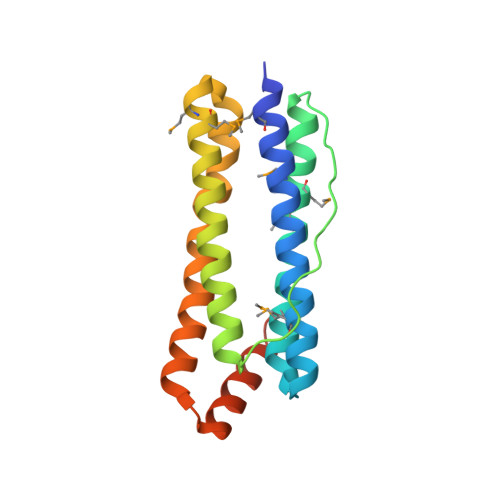Crystal structures of a tetrahedral open pore ferritin from the hyperthermophilic archaeon Archaeoglobus fulgidus.
Johnson, E., Cascio, D., Sawaya, M.R., Gingery, M., Schroder, I.(2005) Structure 13: 637-648
- PubMed: 15837202
- DOI: https://doi.org/10.1016/j.str.2005.01.019
- Primary Citation of Related Structures:
1S3Q, 1SQ3 - PubMed Abstract:
Ferritins are known as important iron storage/detoxification proteins and are widely found in living organisms. This report details the 2.1 A resolution native and 2.7 A resolution iron bound structures of the ferritin from the hyperthermophilic Archaeon Archaeoglobus fulgidus, and represents the first structure of a ferritin from an archaeon, or a hyperthermophilic organism. The A. fulgidus ferritin (AfFtn) monomer has a high degree of structural similarity with archetypal ferritins from E. coli and humans, but the AfFtn quaternary structure is novel; 24 subunits assemble into a shell having tetrahedral (2-3) rather than the canonical octahedral (4-3-2) symmetry of archetypal ferritins. The difference in assembly opens four large (approximately 45 A) pores in the AfFtn shell. Two nonconservative amino acid substitutions may be critical for stabilizing the tetrahedral form.
Organizational Affiliation:
Department of Microbiology, Immunology, and Molecular Genetics, University of California, Los Angeles, Los Angeles, California 90095, USA. ericj@caltech.edu
















